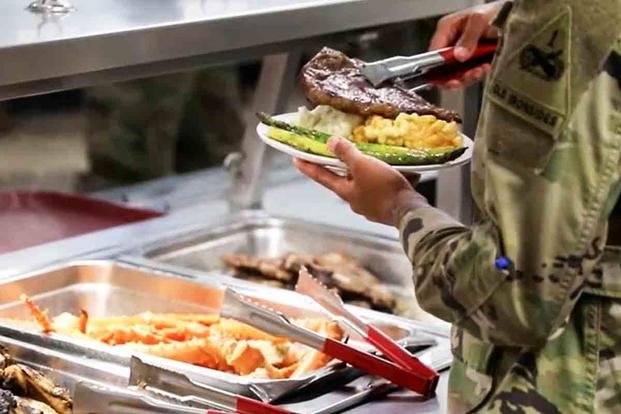Macronutrients — proteins, fats and carbohydrates — make up the types of calories we consume each day through food and drink. These are significant, as the balance of macronutrients also determines key vitamins, minerals and other nutrients that provide energy for activity, as well as the daily stress we place on our minds and bodies.
However, all foods can be categorized into the following categories: Unprocessed or minimally processed foods, processed culinary ingredients, processed foods and ultra-processed foods. Finding a balance in these categories is proving to be difficult for more and more Americans, as we are consuming far too many of the unhealthiest categories: ultra-processed foods.
Here is a breakdown of the categories:
Unprocessed or Minimally Processed
The basics of a healthy diet are found here: a foundation of fruits, vegetables, grains, legumes, nuts, meats, seafood, eggs and milk. The shelf life on most of these real, whole foods is limited, though extended when refrigerated or frozen.
If you can make multiple trips to the market or grocery store (or grow, hunt, fish) each week, you may find eating more of your meals from this category possible. Unfortunately, that is not the case for many Americans, as we tend to make more and more selections from the categories below.
Processed Culinary Ingredients
What we add to our foods (even to the healthy options above), such as olive oil, butter, sugar, dressings, salt and other cooking ingredients and condiments, can add extra healthy or unhealthy nutrients (as well as excess calories) to our food intake.
Leaning toward healthier options like olive oil and minimizing sugar, salts and dressings can be helpful with overconsumption issues many of us have with this category. We Americans get less than 30% of our calories from this category.

Processed Foods
Processed foods are not necessarily unhealthy, but are not as good as the unprocessed, more healthful choices. Adding olive oil, sugar or salt to foods and placing them in bags, boxes, cans or other packaging makes good foods “processed.”
Examples include simple bread, cheese, tofu, canned tuna or beans. These foods have been altered, largely to increase shelf life, but still can contain significant nutritional benefits. They offer convenience and can be incorporated into nutritious meals. Often, these processed foods get lumped into the ultra-processed foods category below when discussing the nutritional values of unprocessed versus processed foods.
Ultra-processed Foods
According to Northeastern University’s Network Science Institute, ultra-processed foods make up 73% of the U.S. food supply, and this category accounts for more than 50% of Americans’ caloric intake. These foods undergo multiple refining processes, contain numerous added ingredients and are highly manipulated.
The nutritional benefit from these foods is typically minimal at best and most likely harmful, due to added chemicals when overconsumed. Examples include chicken nuggets, soft drinks, chips, chocolate, candy, ice cream, sweetened breakfast cereals, packaged soups, hotdogs, fries and more. Sorry, it’s all the “good tasting” stuff.
Our issues stem from affordability, ease of consumption and taste when consuming ultra-processed foods. Still, another underlying discovery is that these foods are addictive, according to the British Medical Journal. The BMJ findings state:“Refined carbohydrates or fats evoke similar levels of extracellular dopamine in the brain striatum to those seen with addictive substances such as nicotine and alcohol. Based on these behavioral and biological parallels, foods that deliver high levels of refined carbohydrates or added fats are a strong candidate for an addictive substance.”
Habits can often be confused with addiction, but the two are different. Working hard to create a habit of eating healthier, unprocessed foods is not the same as being addicted to healthful eating. The habit of buying ultra-processed foods at the store can feed our addiction to these foods that have similar hormonal effects on the body as caffeine, nicotine and alcohol.
So when you choose something to eat, consider something you have to peel, like a piece of fruit, versus something you have to unwrap. Drink more water and fewer sodas and sugary juices, and you will notice a big difference as every cell in our body needs water, oxygen and good food.
Related reading and references:
• The Metabolic Matrix: Re-engineering ultra-processed foods to feed the gut, protect the liver, and support the brain
• Ultra-Processed Foods and Incident Cardiovascular Disease in the Framingham Offspring Study
Stew Smith is a former Navy SEAL and fitness author certified as a Strength and Conditioning Specialist (CSCS) with the National Strength and Conditioning Association. Visit his Fitness eBook store if you’re looking to start a workout program to create a healthy lifestyle. Send your fitness questions to [email protected].
Want to Learn More About Military Life?
Whether you’re thinking of joining the military, looking for fitness and basic training tips, or keeping up with military life and benefits, Military.com has you covered. Subscribe to Military.com to have military news, updates and resources delivered directly to your inbox.
Story Continues
